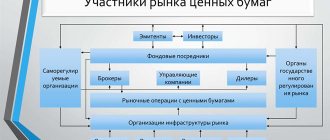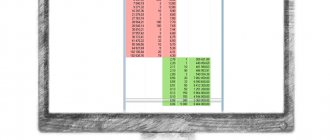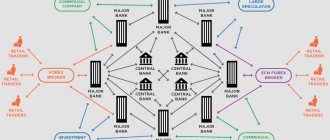Photo from the site zimbio.com What you need to know about the auction and what rules to learn in order for it to take place and be successful for both the seller and the buyer - says Nikolai Muzychenko, director of the Industrial Assessment Center CJSC (part of the IPM-Consult Group of Companies ") and Karina Sazanovich, head of the legal practice of IPM-Consult Group of Companies.
— An auction is a way of publicly selling a company’s property. The decision to sell must be made by the owner.
Based on our practice, an auction has proven its effectiveness as the most accessible and transparent mechanism for the sale of unused or inefficiently used property.
| Nikolay Muzychenko Director of Industrial Assessment Center CJSC | Karina Sazanovich Head of Legal Practice, IPM-Consult Group of Companies |
The transaction price determined during the auction (held in accordance with the law) is recognized as the market price of the product for tax purposes (Article 30−1, Tax Code of the Republic of Belarus).
It should be remembered that, in accordance with Article 419 of the Civil Code of the Republic of Belarus, an auction held in violation of the rules may be declared invalid by the court. This means that the contract concluded with the auction winner will also not be valid.
During 2021, we organized more than 150 productive auctions for the sale of real estate, transport, special equipment and machinery. Having summarized and analyzed the practice, we have identified five rules that allow us to conduct a correct, efficient and effective auction.
The essence of auction theory
In recent years, the modern world economic community has increasingly paid attention to the development of a new direction in economic science - auction theory. This can be explained by the fact that thanks to this theory, a huge number of important conclusions and recommendations have emerged both in theoretical understanding and in everyday practical activities at all levels of interaction between economic agents. In the development of economic science, auction theory is gradually beginning to play an increasingly important role. But focusing on auctions is not limited to the realm of abstract theories and models. Today, auctions are increasingly used during the daily process of economic interaction between all economic entities - from the public sector and commercial organizations to ordinary people and households.
The prevalence of auctions at the theoretical, empirical and practical level can be explained by several reasons.
Firstly, auctions are extremely important in practice, because it is through them that various economic transactions are carried out. In world practice, governments use auctions to effectively sell government securities, foreign currency, licenses for the extraction and use of mineral resources that are state property, as well as all types of government assets in the privatization process. Public procurement contracts are also signed based on the results of auctions among business entities. Enterprises also actively use auctions to purchase raw materials and identify contractors. In addition, real estate, agricultural products and biological assets, art and antiques are also sold usually through auctions. Other “informal” economic transactions, such as the struggle for control of a company, are also auctions in essence, if not in name. In recent years, there has been increased interest in new forms of auctions, for example, special ones for the sale of licenses to use frequencies and the design of auctions for use in fundamentally new markets, such as the sale of electricity and transportation services. At auctions, objects are sold that have not only a positive, but also a negative price. For example, in many European countries, licenses for the right to operate commuter rail services are auctioned to the operator who requested the smallest budget subsidy.
Secondly, auctions are very useful in the theoretical part of economic science. Over the past fifty years, after the publication of the famous article by the American economist W. Vickrey in 1961, in which the scientist first used the tools of game theory to explain the dynamics of auctions, this direction has received significant development. In his article, W. Vickrey derived several possible auction equilibrium points and formulated an early version of the fundamental theorem of auction theory on the equivalence of income (revenue), which was generalized 20 years later by the economist from the University of Chicago G. Myerson and, independently of him, D. Riley and W. Samuelson. Since then, auction theory has become the subject of "high" science, as evidenced by the fact that in the last 20 years, two Nobel Prizes have been awarded to economists who have made major contributions to the development of auction theory as a subdivision of the field of mechanism design. Thus, the 1996 prize was received by the already mentioned W. Vickrey, and the 2007 prize was received by a group of scientists - L. Gurwitz, G. Myerson and G. Maskin.
As the leading modern auction theorist from Oxford University, P. Klemperer, notes, auction theory has become the foundation for a wide variety of theoretical developments. This theory has been used in developing an understanding of pricing processes and methods, especially those where during negotiations both buyer and seller are actively involved in the price determination process. There is also a close relationship between auctions and competitive markets. In particular, an analogy was drawn between the theory of optimal auctions and the theory of monopolistic pricing. Auction theory can also be used to construct oligopolistic pricing models. Auction theory models can also be applied to non-price mechanisms, such as queuing models, “wars of attrition”, lobbying, various types of competitions and rationing systems.
Rule three: Make the right advertising campaign
In order to run a successful auction, the seller needs to understand the market of potential buyers and their advertising budget. If for the real estate market in Belarus it is quite enough to have a well-promoted specialized website, electronic mailings to the client base of potential buyers and posting information on specialized advertising resources (for example, realt.by), then such events are not suitable for the sale of rare equipment.
For example, when selling unique equipment from one of the Belarusian factories, information about it was posted on German and Dutch specialized websites, and negotiations were held with employees of electronic platforms of the European Union. This made it possible to attract foreign buyers from the USA and Lithuania. As a result of the auction, equipment with a starting price of $100,000 was sold for $205,000.
It should be remembered that in accordance with Article 418 of the Civil Code, a notice of bidding is subject to mandatory publication by its organizer in print media (“Sovetskaya Belorussia”, “Respublika”, “Zvyazda”, “Narodnaya Gazeta”, “Belorusskaya Niva”, Information and Analytical Bulletin “Competitive bidding in Belarus and abroad”) - no less than thirty days before the auction, and in the case of repeated bidding - no less than ten days.
Photo from bizlida.by
Auction types
A typical auction is characterized by the presence of one seller and a certain number of potential buyers. The key to any auction is the presence of asymmetric information. Often the seller does not know or does not have all the information about how much the buyer is willing to pay for each of the goods. Indeed, if the seller had such information, he would not need to hold an auction or any other costly measures to sell the goods at all. After all, he can simply negotiate and sell the product to the person for whom it has the greatest value.
In practice, various auctions are used. But the main aspects in which they differ are: firstly, the principle of determining the highest bidder, and secondly, the amount that the winner will have to pay. In theory, four main types of auctions are widely analyzed:
- open ascending auction (also called English or oral auction);
- open top-down auction (used during the sale of flowers at the world's largest flower market, Amsterdam, and is therefore known as "Dutch");
- first price sealed envelope auction;
- second-price sealed envelope auction (also called a Vickrey auction after the economist who developed its concept).
To simplify the description of auction rules, let’s consider the sale of one object.
Rule one: Correctly determine the value of the auction item
The sale price of a property should be based on current market analysis, so an independent appraisal is recommended before selling. It has the right to be carried out by appraisers certified in accordance with the procedure established by law by the State Committee on Property and the State Committee on Science and Technology for the types of objects being appraised. In addition, a state register of appraisers has been created and maintained in Belarus.
The market value of the property, formed by a certified appraiser, allows the owner of the property, regardless of the form of ownership, to form the “correct” starting price of the auction item.
Please note that the “real prices” of transactions sometimes differ significantly from the “offer prices” on various thematic Internet resources, since many of them are formed based on the “optimistic” wishes of the seller and do not always coincide with reality.
Open ascending auction
The price at such an auction is successively increased until only one bidder remains, who offered the highest price. The price can be announced by bidders or the seller himself, or bidders can register bids online. In a Japanese auction (the auction model most often used by auction theorists), the price increases automatically and continuously, and players gradually withdraw from the game without the right to return. This ensures the impossibility of the so-called jump bid - an artificial bid that sharply increases the price of the lot. Typically, at English auctions, the auction step is determined - the minimum amount by which the next bid should be higher than the previous one. Basically, this is a percentage of the current price, or some minimum discrete value.
Rule five: Acceptable conditions for payment for property and its registration
When establishing payment terms for the purchased auction item, the buyer should take into account the final transaction amount based on the results of the auction.
For an effective sale, it is recommended not to set minimum payment terms, but to offer payment in installments.
For example, according to the Resolution “On the procedure for calculating payments when paying in installments for alienated property owned by the Republic of Belarus”, when paying for capital buildings owned by the Republic of Belarus when selling in installments, the amount of the initial payment must be at least 30% of the sale price of the property, taking into account the previously paid deposit amount, if such is paid. And according to the Decree “On the procedure for disposing of state property”, the buyer, upon his written application, may be given an installment plan for payment of property for a period of no more than one year from the date of conclusion of the purchase and sale agreement with monthly indexation of payments.
Also, when providing payment in installments, we do not recommend tying the transfer of ownership of the property to the moment of its full payment, since this condition:
- Not beneficial for the buyer (before the transfer of ownership, he cannot reconstruct the object)
- Not beneficial for the seller (until the transfer of ownership, the seller bears the costs of maintaining the property and pays the appropriate taxes)
The most acceptable option for both parties may be to register a contract for the purchase and sale of real estate with an encumbrance: the property is pledged to the seller until full payment is made.
How to choose an auction organizer
To summarize, we note the main criteria that you should pay attention to when choosing an auction organizer:
1. Possibility to carry out an independent assessment procedure.
2. Inventory of property put up for auction.
3. Provision of legal services related to the sale of such property.
4. Availability of marketing tools and best practices for finding potential buyers.
First price sealed envelope auction
Here, participants place a bet only once, simultaneously and independently of each other. This is usually carried out in a windowless room in which there is no talking, only texting. It is at such auctions that state assets, licenses for the extraction of minerals and fuel, state land are sold, and purchases are made (the lowest bid price wins). The UK and US Treasurys use the "multi-commodity" equivalent of this type of auction to sell treasury bills for which each bidder pays his own bid. A first-price sealed envelope auction is a type of bidding that prevents collusion and dramatically increases the seller's income. Its main advantage is to encourage competition: even those buyers whose probability of winning is quite low can participate. Weak competitors know that in an open auction they can be outbid, but in a closed auction they have a certain chance of winning - in the event that a stronger competitor tries to win at a lower price. Weak competitors succeed only in exceptional cases (for example, at an auction for third-generation mobile communications licenses, a seemingly uncompetitive company unexpectedly received a license in Denmark), but the very fact of the participation of weak competitors forces strong players to pay a fair price. And therefore, even buyers who are confident in their victory tend (even to the point of using administrative resources) to limit the circle of possible participants.
Investment tax benefits
The current taxation of investment activities of individuals provides for certain benefits, but, by the way, there are not many of them. I will focus on the most popular ones below.
- If you own real estate for less than 3 years and then sell it, you pay 13% income tax. But if more than 5, then no costs are charged. Currency is also equivalent to property.
- Tax deduction, but not more than 52 thousand rubles for funds that have been in a brokerage account for at least 3 years.
At the end of 2021, against the backdrop of the pandemic and the downturn in the economy, NAUFOR proposed abolishing VAT for investment advisers. The amendment is still under consideration, as are the other 11 innovations from the organization.
Closed envelope auction at second price
Follows the same rules as the previous one, but the winner pays the second highest bid. This type of auction is rarely used in practice, but is often used by theorists in auction modeling for its attractive properties (the optimal, or dominant strategy for each individual auctioneer is achieved only when he puts exactly the price that reflects the true value of a certain object for him) and similarity of strategies used by players during an English auction. The multi-commodity auction option is sometimes used by governments and central banks during foreign exchange sales.
Do I need to pay tax on investments?
Yes, definitely yes. According to the legislative rules of our country, taxation of investments is a mandatory attribute of the activities of individuals, regardless of how long you have been in the investment segment and how much you have earned. In fact, a lot of things are income taxes, for example, after trading on the stock exchange, the broker pays for you, but from the client’s money, from the deposit - the bank, from the rent - you yourself. Traditionally, taxation occurs according to the simple interest formula, but investing (accrual of profit on deposits in banks, online projects) according to the compound interest formula, and how it works can be found out from the material on www.gq-blog.com.
Auction when all participants pay
You can also distinguish a separate type of auction when all participants pay. According to its rules, participants place their bids in an envelope and at the same time give them to the auctioneer. When the envelopes are opened, the highest bidder wins the item by paying the bid price. In this case, all losing bidders must also pay the auctioneer the amount they marked in their envelope. This is a non-standard auction, but it can be used to understand processes such as election campaigns (where the bids can be interpreted as the costs of campaigning), or to model queues for a limited resource (where the bid is the amount of time an actor is willing to undertake to get the resource). In practice, of course, for each specific case a separate, “personal” auction design is modeled, where the main role is played by the small details of the model.
Rule four: Correctly determine the type of auction
There are currently two types of auctions:
- Classic auction
- Electronic auction
A classic auction to increase the starting price is today the main instrument for the sale of state property and open joint-stock companies with a state share in the authorized capital. It is also in demand among private businesses. It can be made effective with the help of an effective advertising campaign and the resources of the auction organizer.
Electronic auction is a new and promising mechanism for selling property for our country. It is more convenient:
- Regarding the provision of documentation, submission of applications
- You can participate in auctions without leaving your home while on vacation
Electronic trading platforms can be used by both public and private companies.
The downside of working with an electronic platform may be malfunctions of providers, equipment, or computer viruses that can disrupt ongoing auctions. In addition, the presence of an electronic trading platform at the auction organizer does not solve the problem of finding potential buyers, but is essentially an “upgrade” of auctions as a method of sale, designed to solve some issues of comfort for participants and auction organizers.
In order for an electronic trading platform (ETP) to become an effective advertising resource and popular among buyers, it needs to be developed in terms of marketing - these are key issues of recognition, occupancy, and attendance. The absence of these three components in the classic version of auctions may leave electronic auctions only as a matter of developing auctions on the existing “marketing base”, but not as a tool for solving problems associated with the sale of property.
Therefore, when choosing the “electronic trading” sales method, it is necessary to pay attention to the popularity and efficiency of a specific electronic platform - it is directly related to the current activities of the ETP operator and its success in selling unused, inefficiently used property.
Photo from the website bntd.by
Auctions: Russian experience
If we turn to the modern economic history of the Russian Federation, then, as the leading Russian expert on auction theory K. Sonin notes, the reason that the Russian Federation sometimes does not do what is needed in economic policy is that the government does not believe that it will be able to follow the recommendations of economists properly. And therefore, a decision is made that it is better not to adhere to the recommendations than to follow them poorly. The likelihood of collusion and lack of competition in the event of an auction is very significant, and therefore it is better to simply set a price, hold a competition and negotiate privately. Indeed, as evidenced by the recent Russian practice of selling state assets, most auctions were characterized by a lack of competition, where a significant number of lots were sold almost at the starting price, since bidders agreed on low prices directly in the hall. This situation arose during the auction for the sale of the state-owned enterprise Slavneft and during the sale of fish quotas (at “fish auctions”). The problem is that most auctions were conducted using the English (open bottom-up) design, which provides opportunities for collusion because the winner pays the price where the loser settled, and so the potential winner can bribe potential competitors in exchange for a promise not to raise the bid . At the same time, the weaker player has no incentive to violate the preliminary agreement, because the product will still go to the strongest player, albeit at a higher price. It was under this scheme that controlling stakes in oil and Yuganskneftegaz, the main production asset of the bankrupt Yukos, were sold.
But there is a way out of this situation. It consists of holding an auction in which competition is much better encouraged. This is a first-price closed-envelope auction. Thanks to the fact that participants submit their bids in envelopes, potential customers have much more incentive to break the agreement. Thus, the conspiracy becomes "more vulnerable."
How do the Ministry of Finance auctions for OFZ work and why should an investor follow them?
How the Ministry of Finance auctions for the placement of OFZs are held and what information can be obtained from its results will be discussed in this review.
The sale of government debt securities to investors can serve a variety of purposes.
The funds raised cover the budget deficit and finance government investment programs and projects. In Russia, public debt management is carried out by the Government, which sets the maximum volume of public debt for the next financial year, approves the general conditions for the issue and circulation of government debt securities, and also makes other key decisions on this issue. But the Ministry of Finance directly issues and services government bond issues on its own behalf, engaging the Bank of Russia as a general agent.
The volumes of planned borrowings are regularly published on the official website of the Ministry of Finance and are available for review by everyone. The initial placement of OFZs itself takes place through auctions, which are scheduled to be held on a weekly basis every Wednesday.
The department also publishes the exact schedule for the next quarter on the website, however, in some cases, when market conditions do not allow raising funds at the required rate, the auction may be canceled, as reported in the corresponding press release.
The auction form makes it possible to assess the real market conditions and understand at what rate of return investors are willing to lend to the state. A high level of demand allows the state to count on a lower interest rate on loans for the next placement, while low demand, on the contrary, indicates the need for investors to give higher returns or wait for a more suitable market situation.
Who participates in auctions of the Ministry of Finance
Buyers of debt securities on the primary market are mainly large institutional and private investors who, due to the size of their capital, cannot buy securities on the secondary market without loss of profitability. Also, investors can expect that due to low demand, the auction will be able to obtain more favorable terms than on the secondary market.
In theory, anyone can take part in the auction. However, in practice, brokers and banks that provide clients with access to Ministry of Finance auctions may set certain restrictions on the minimum amount of capital or provide such a service only to a certain category of clients.
For an ordinary private investor whose investment volume does not exceed 20-30 million rubles, the liquidity in most OFZ issues is quite enough to purchase securities on the secondary market. If you operate with larger amounts or expect greater profitability, you can contact your broker to participate in the auction.
How the auction works
The auction is held through a special trading system based on the Moscow Exchange infrastructure. There, a press release is published on the exchange website the day before the auction, which indicates the issues of securities offered at the auction, the time for submitting applications and other features. As a rule, the Ministry of Finance offers two or three OFZ issues at auctions with different maturities.
Auction participants can submit two types of bids: competitive and non-competitive. Competitive bids are executed exclusively at the price specified in the bid and may not be fully or partially satisfied by the issuer. Non-competitive bids are satisfied at the weighted average auction price if there is a supply.
Why do analysts monitor Ministry of Finance auctions?
Based on the results of the auction, the exchange publishes the results. Based on the weighted average yield formed at the auction, market participants estimate the fair yield on securities and general sentiment in the market.
A significant excess of demand over the placement volume or a discount in the auction yield compared to the price on the secondary market - these factors indicate high demand and a possible decrease in the yield on securities in the future. It also matters whether securities with a maturity date are in higher demand.
On the contrary, if the issue was not placed in full, was placed with a premium on yield, or the auction was canceled altogether, then this is a clear signal to the market that the demand for securities is low, and the fair yield on the market may be higher than that offered by the government.
open an account
Galaktionov Igor BKS Broker










